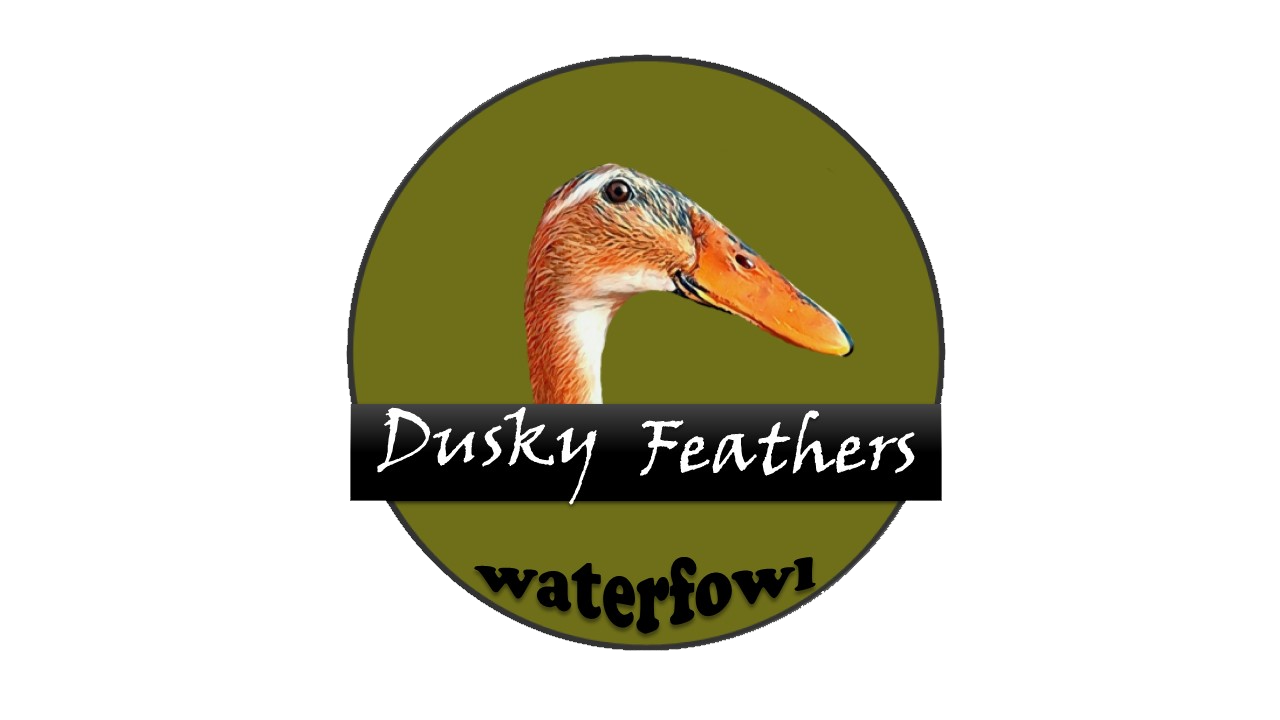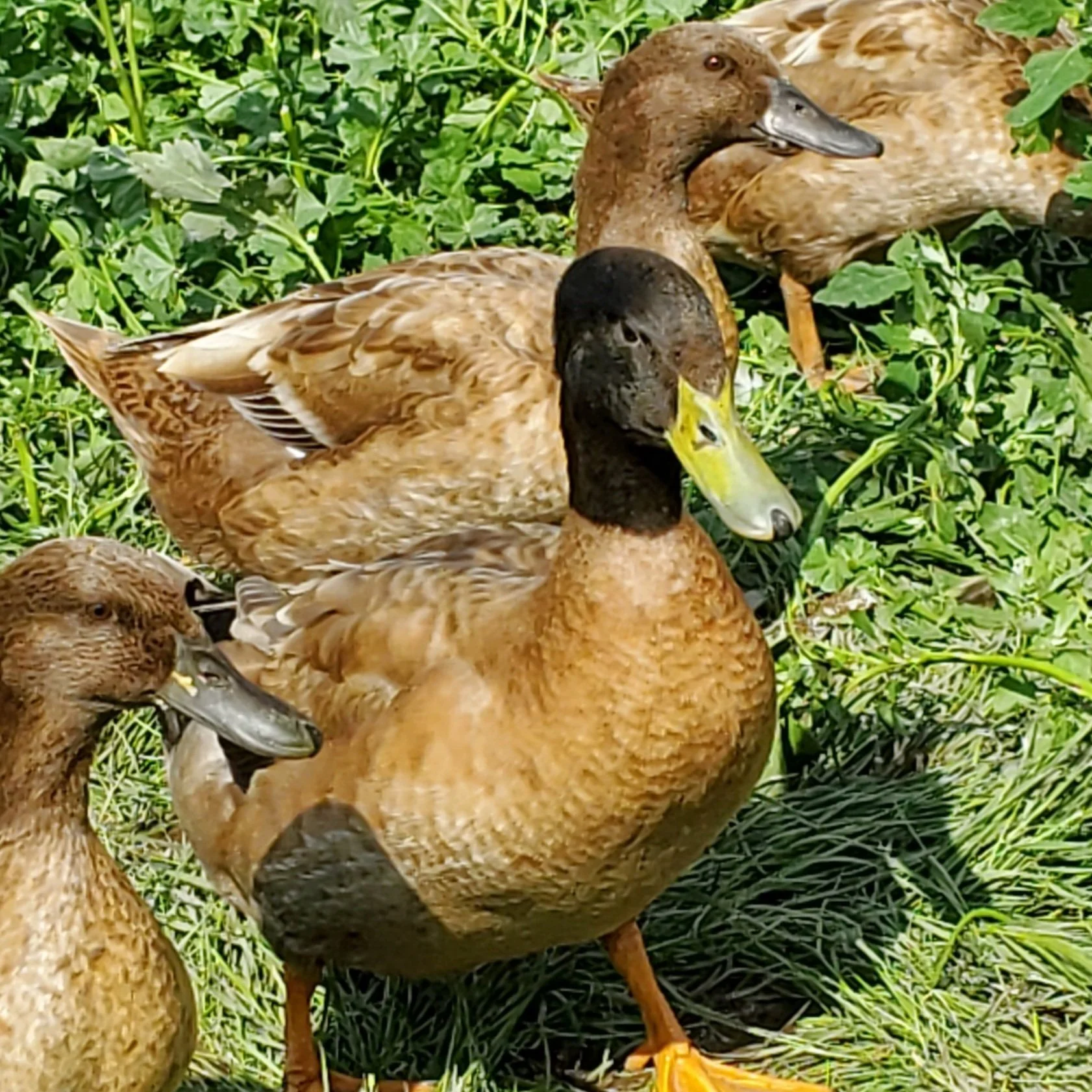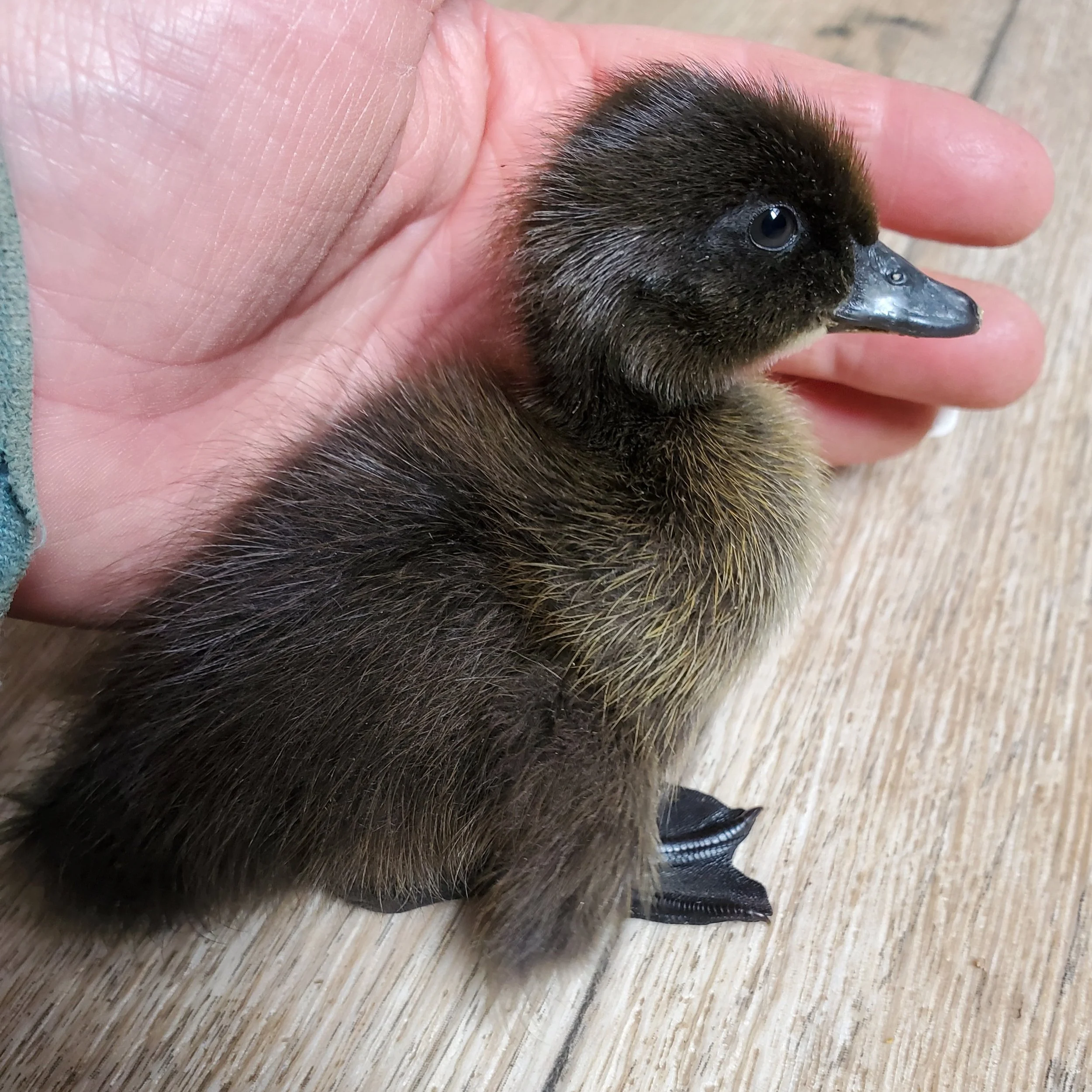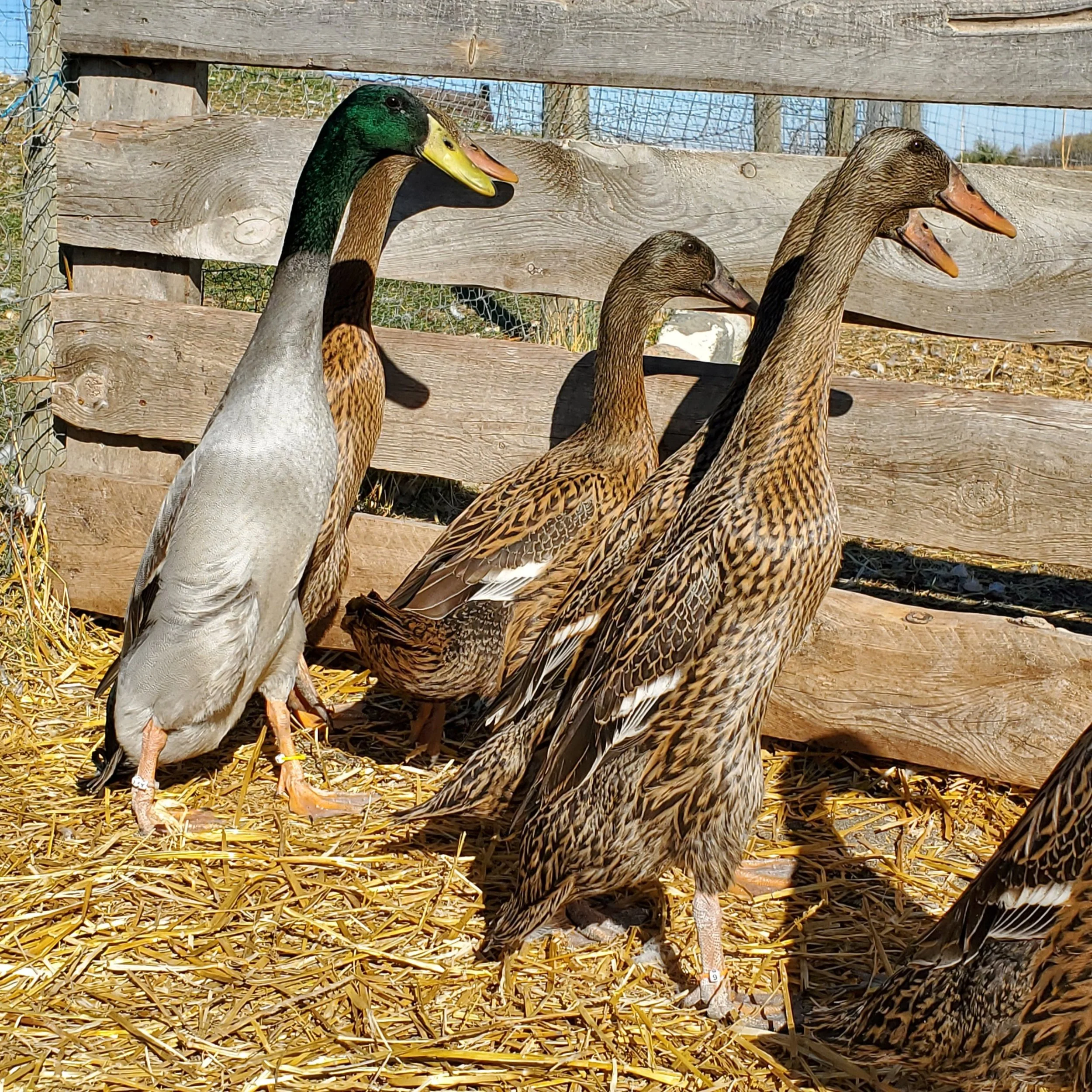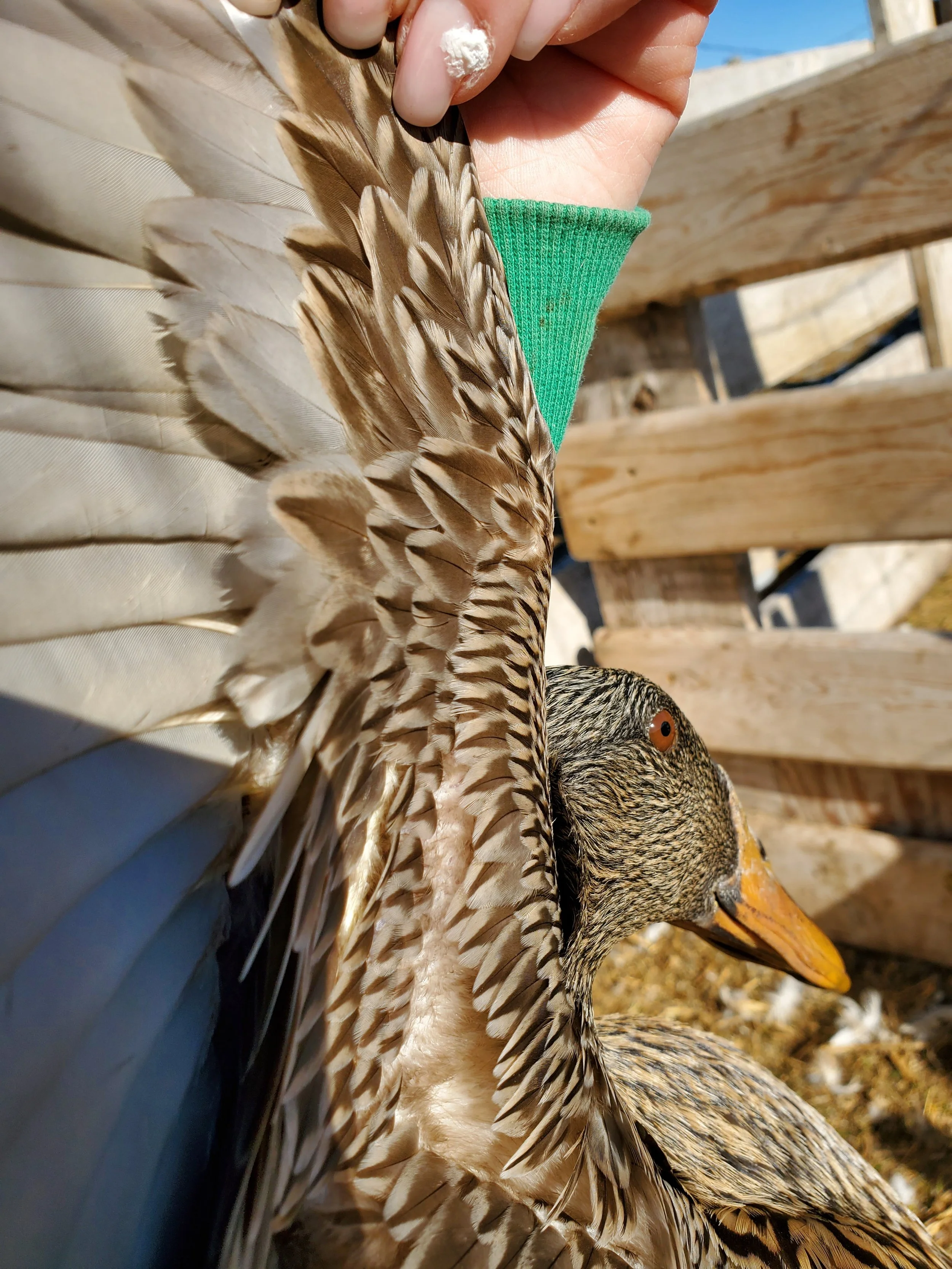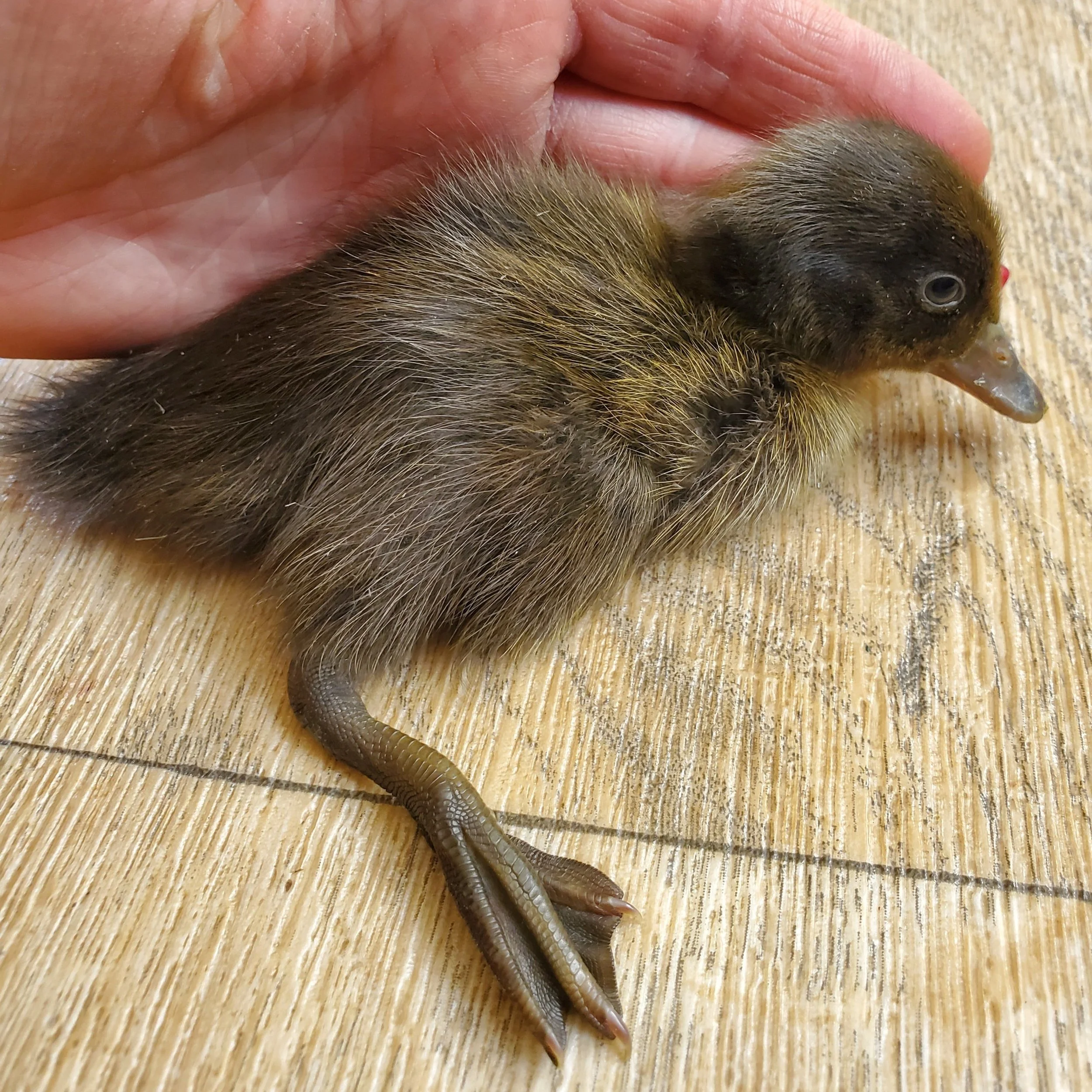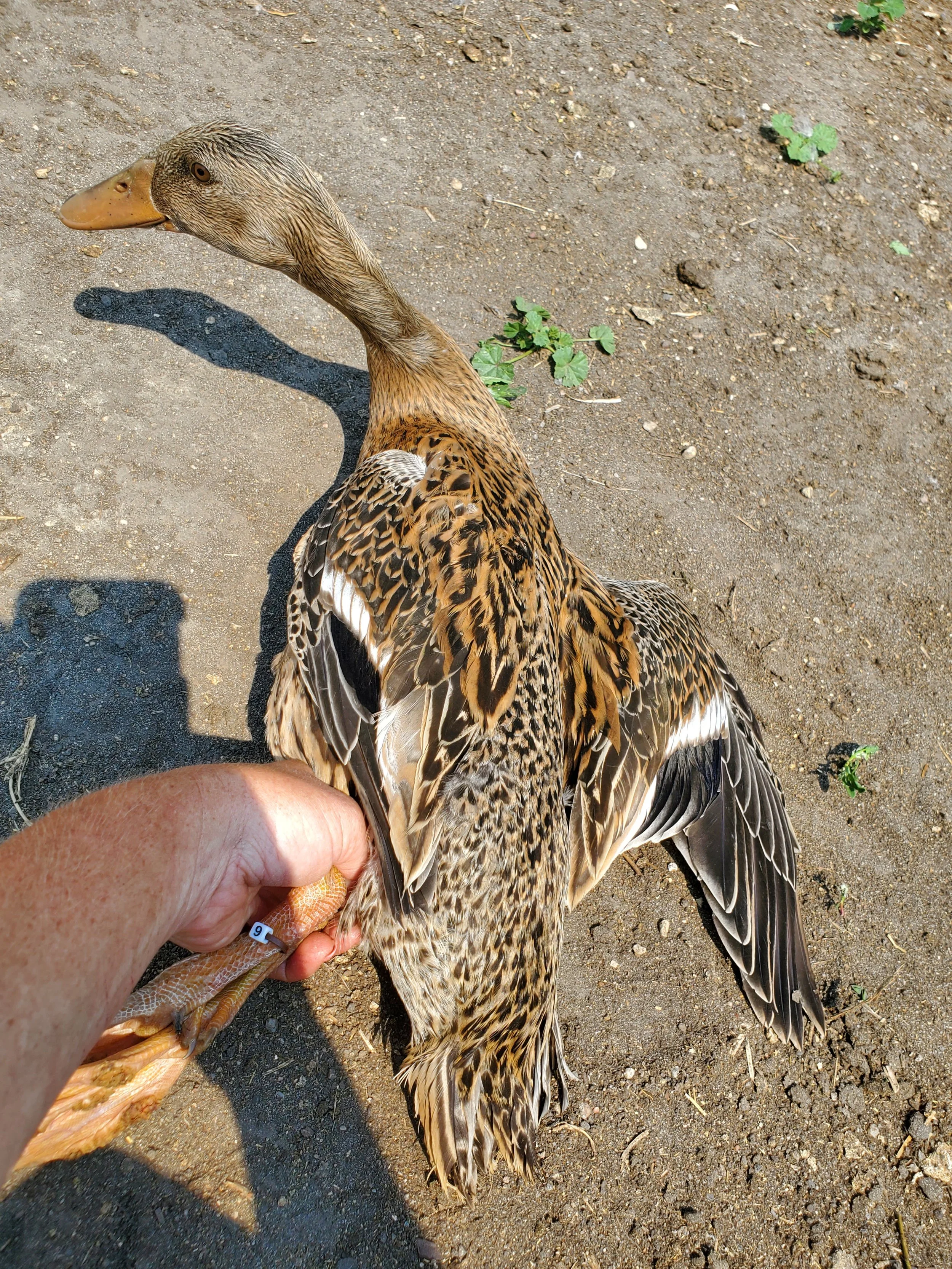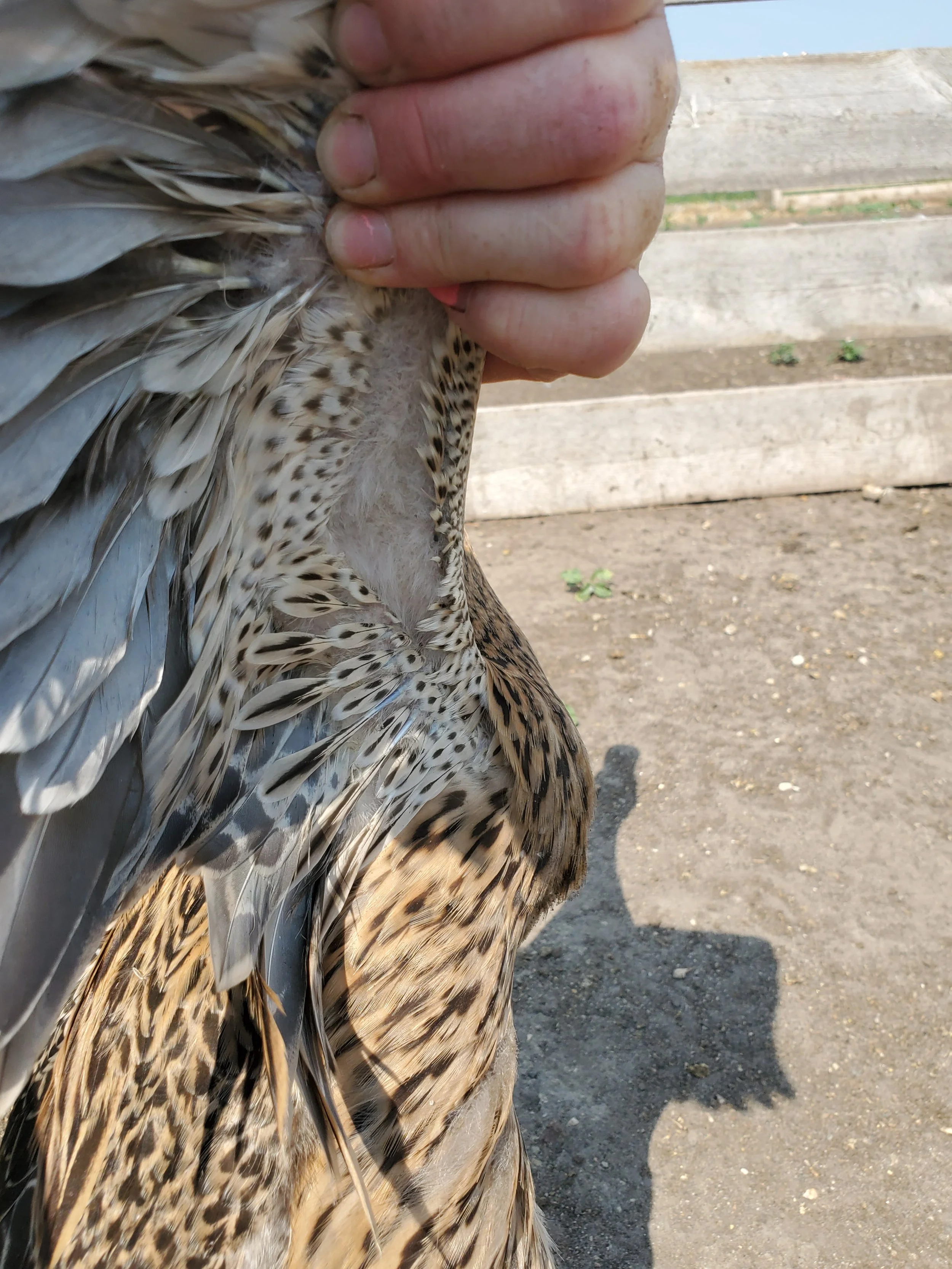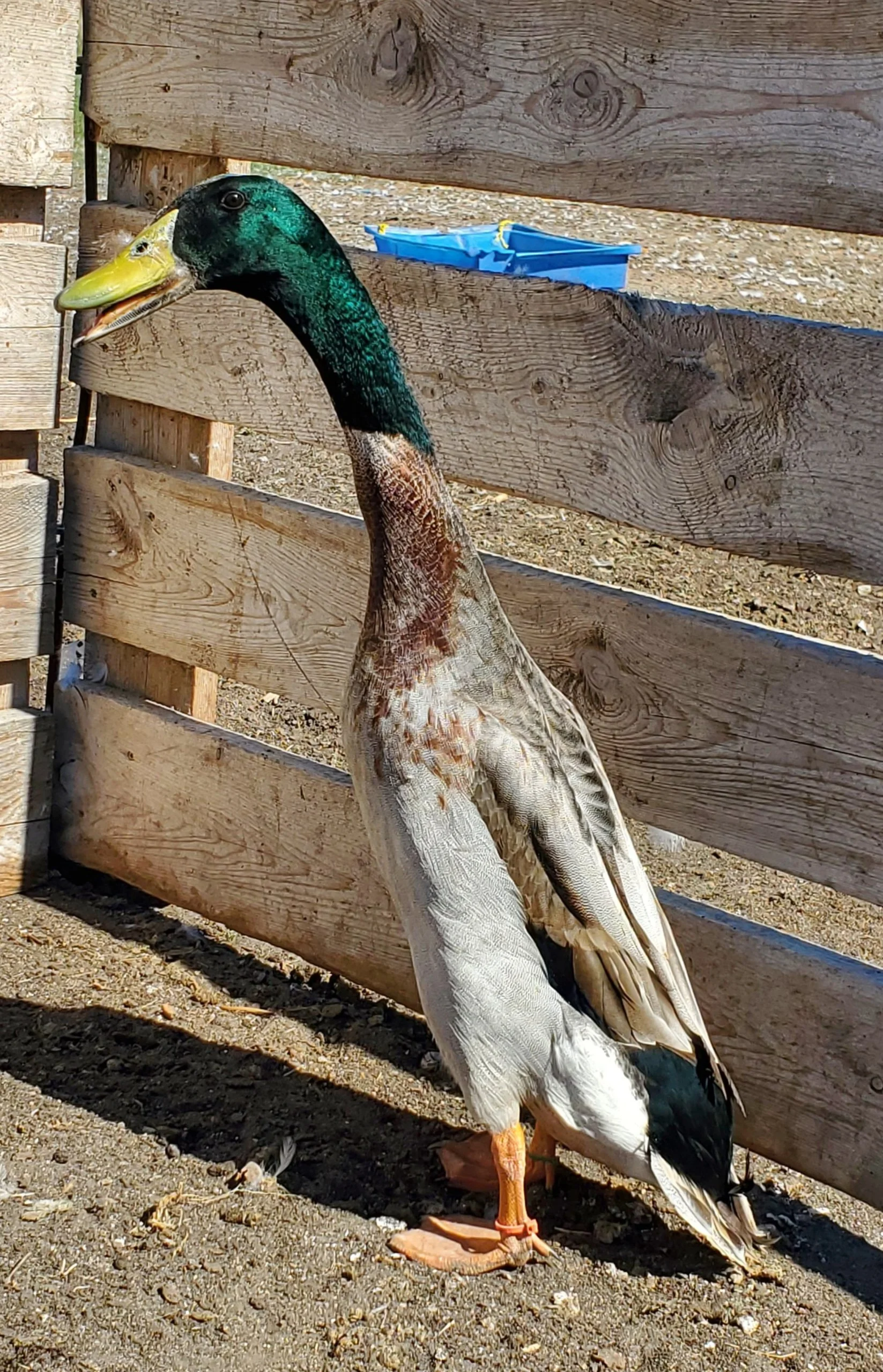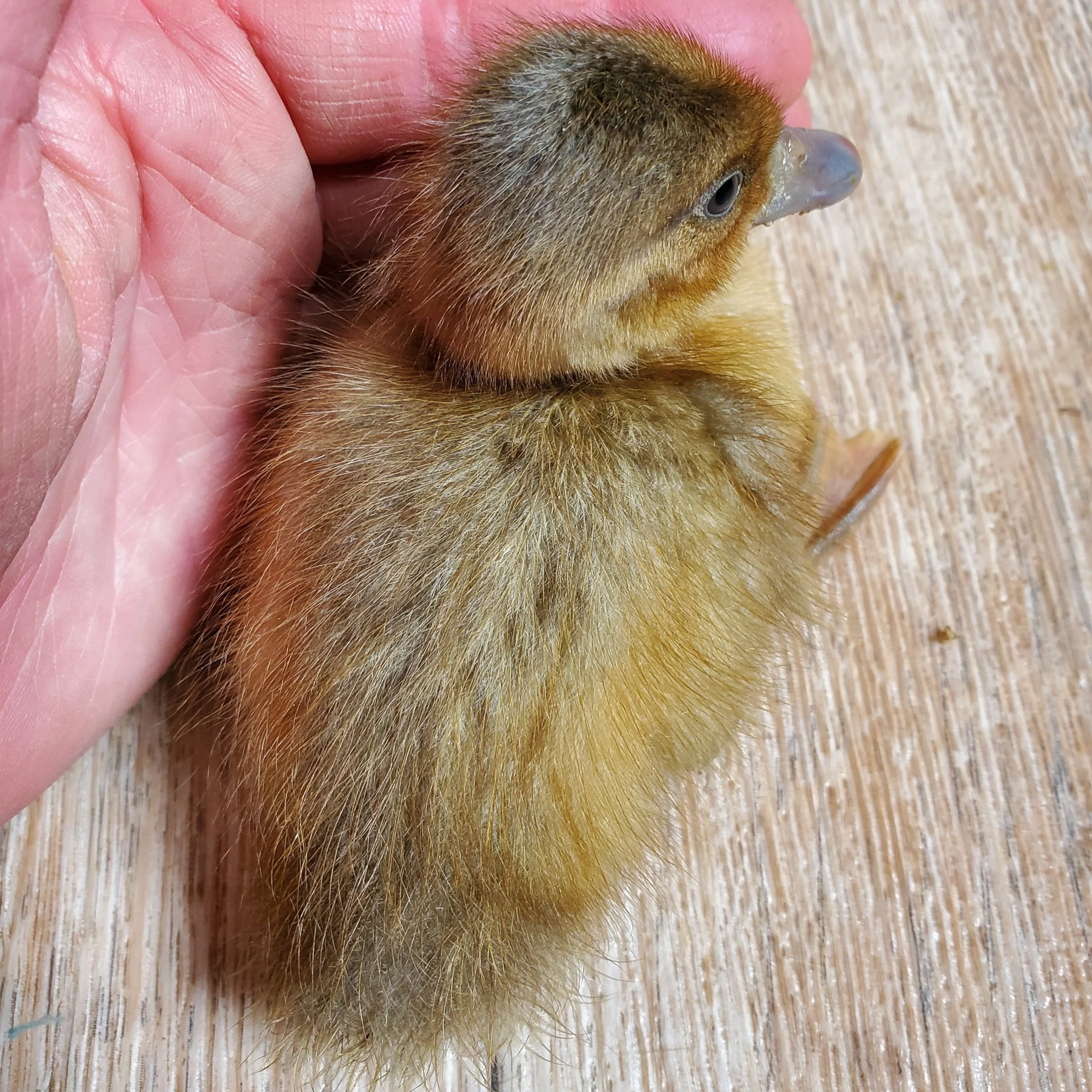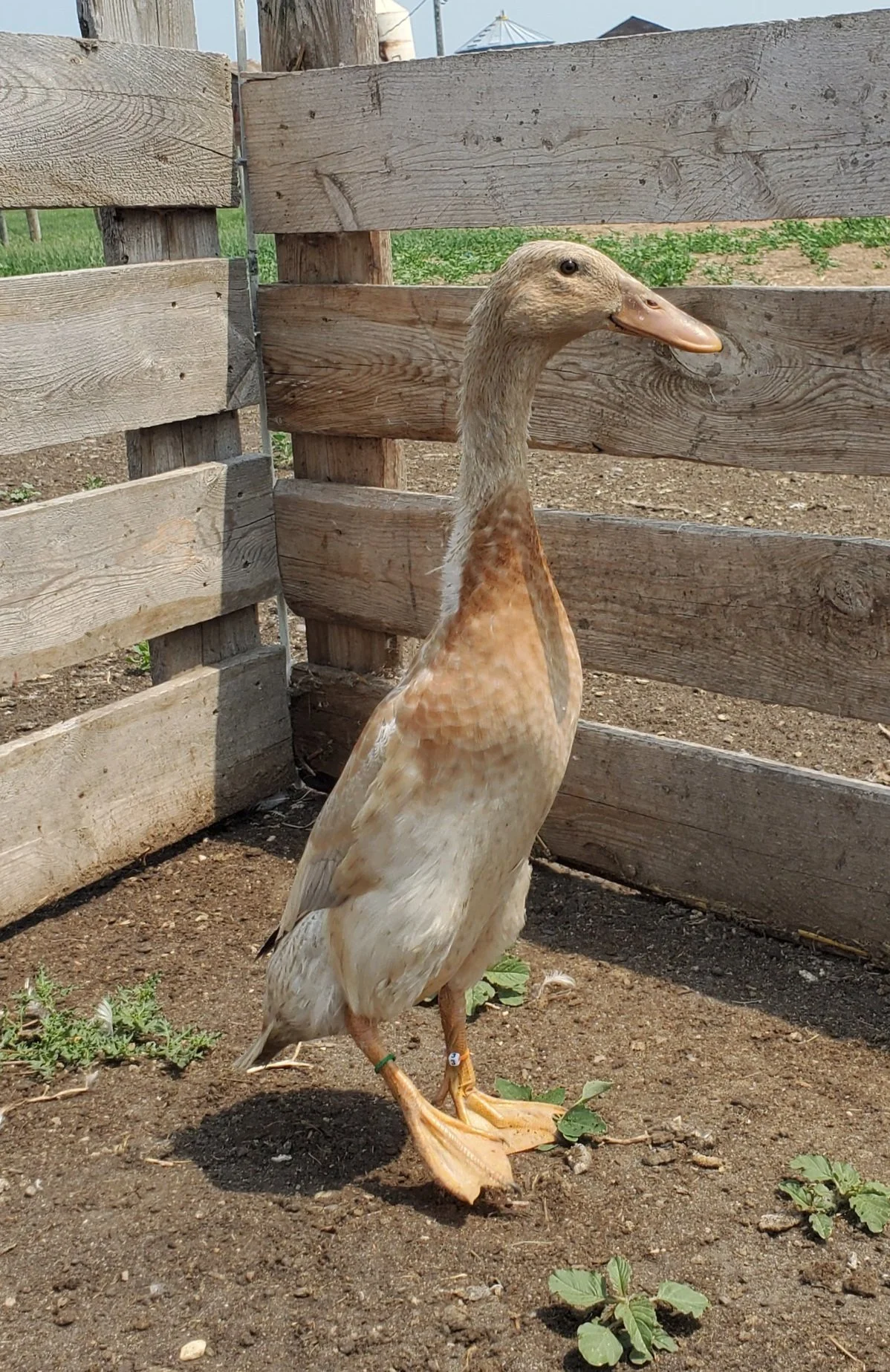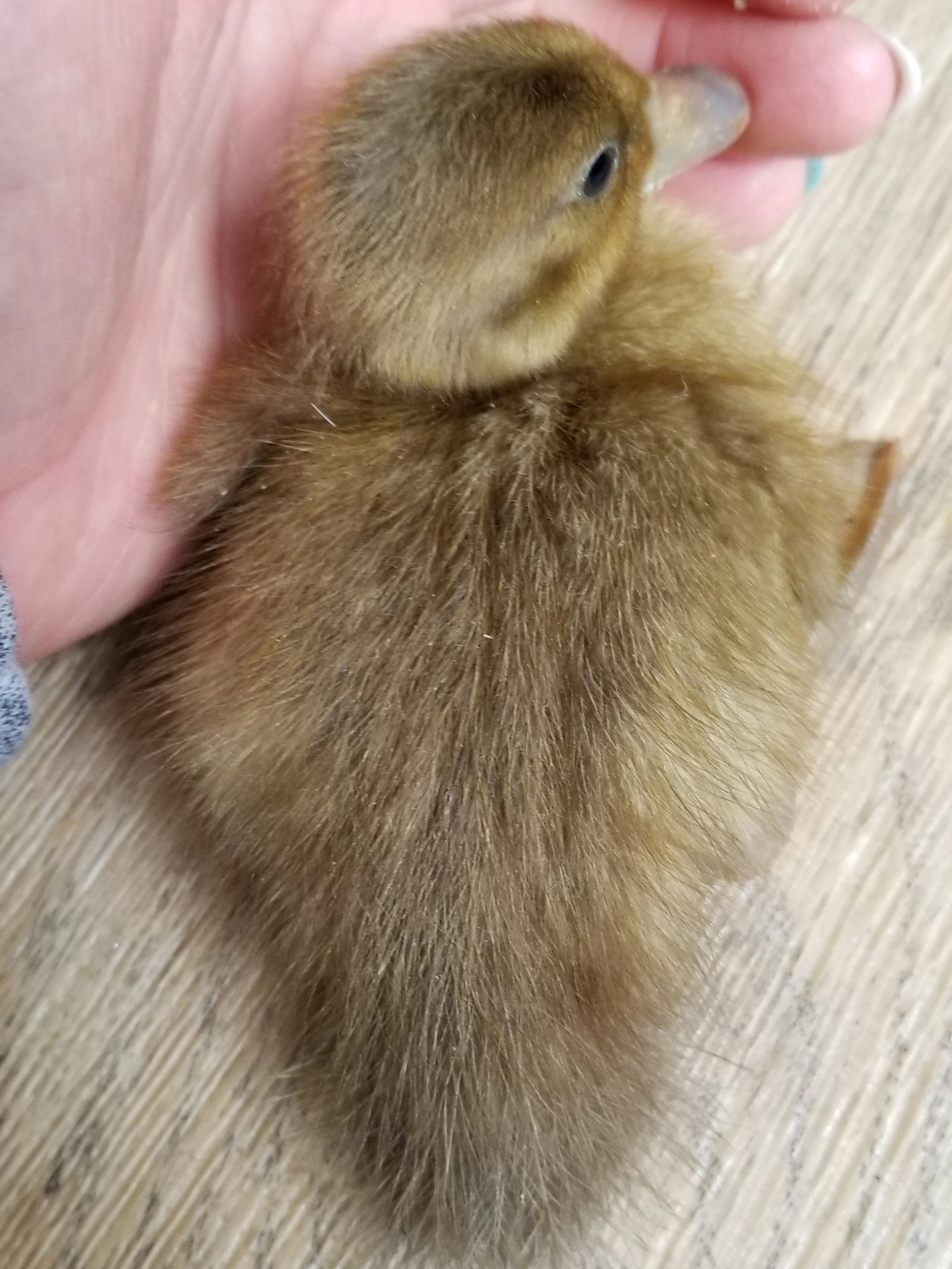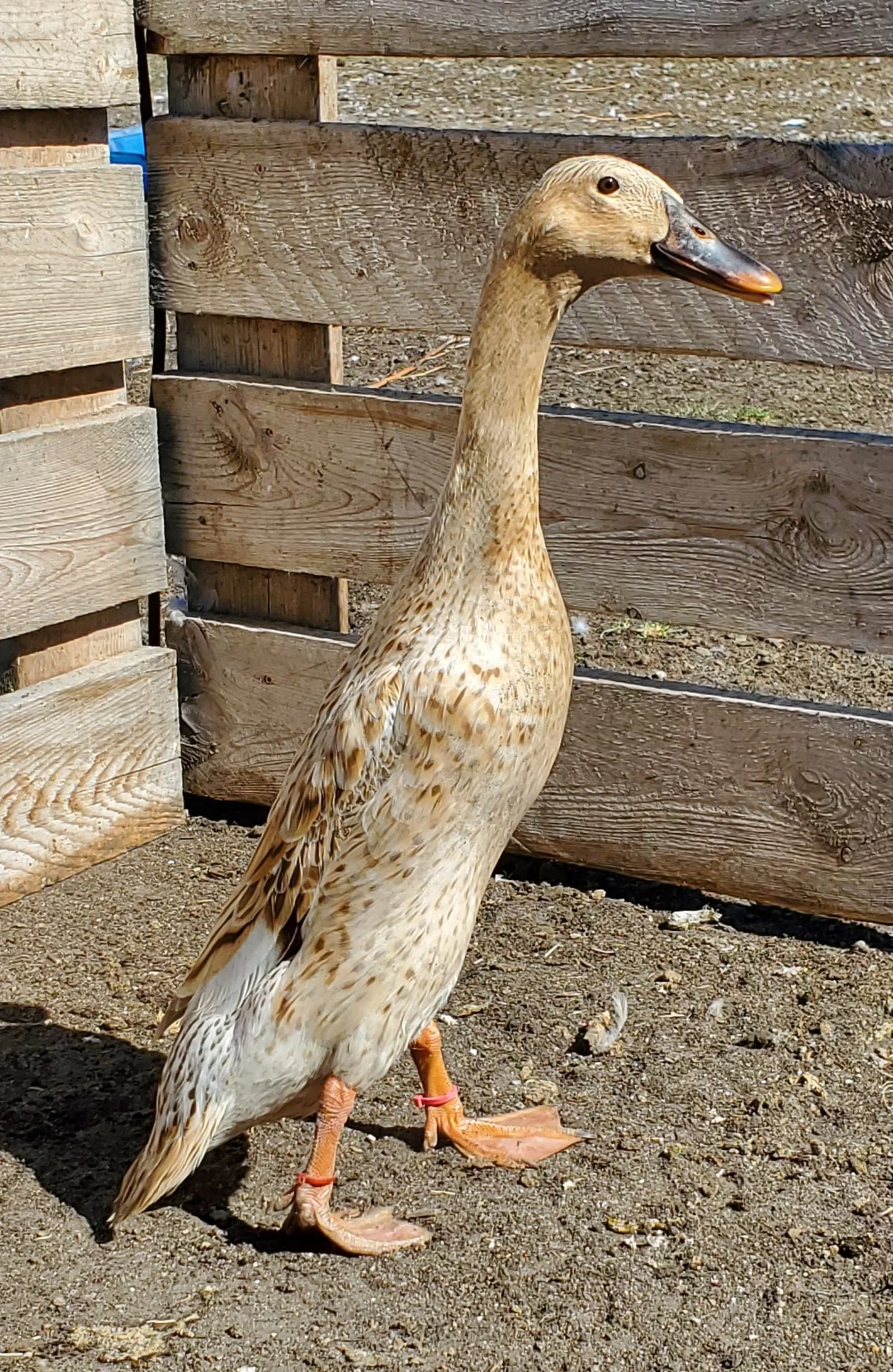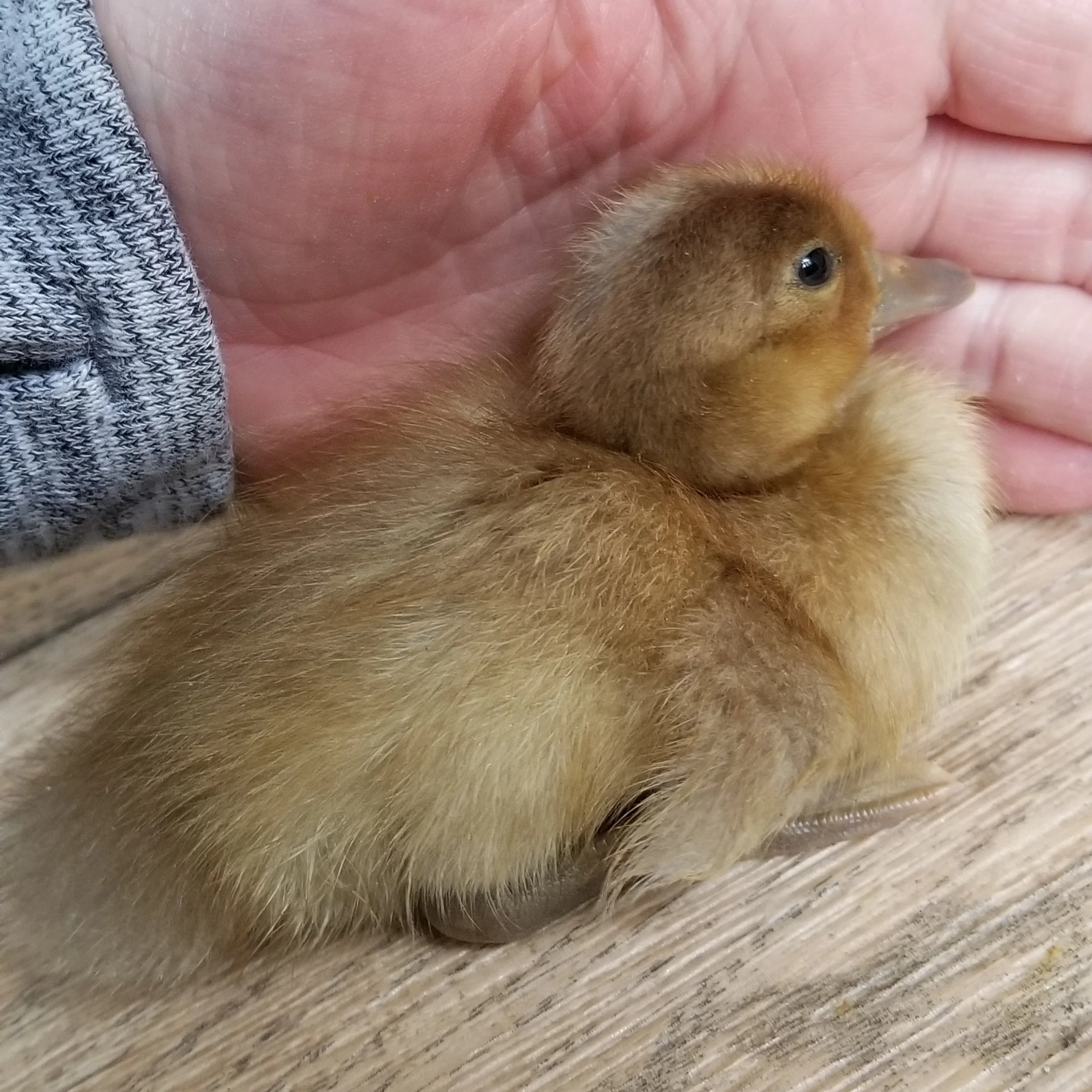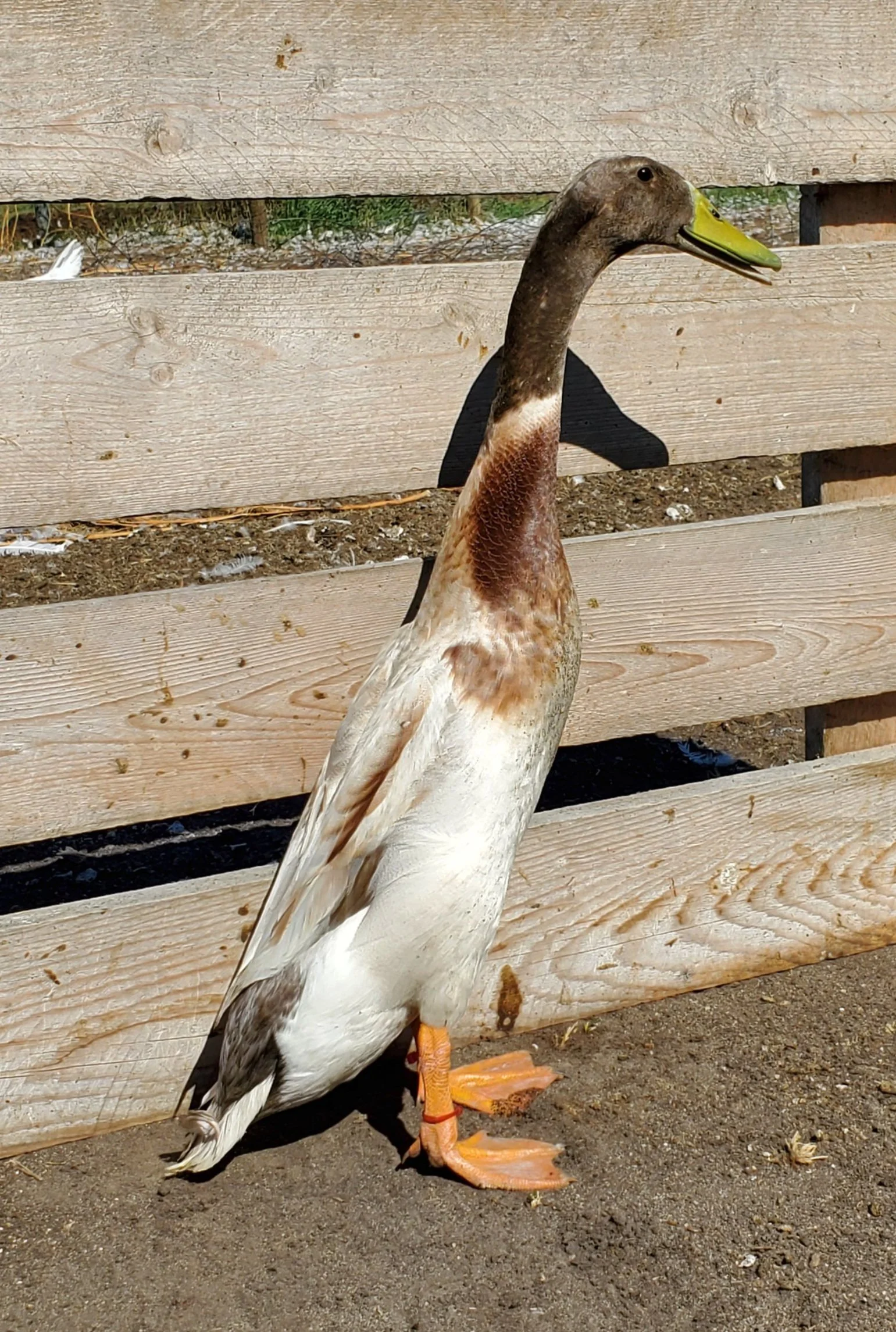The Dusky Pattern
(an allele on the Pattern Locus)The dusky pattern allele (md) is the most recessive on the pattern locus; in other words, if you SEE the dusky pattern, you know the duck is homozygous for dusky! Mallard pattern covers up dusky completely (most of the time!) What restricted pattern looks like with dusky (MR/md) is not completely determined, though it’s generally accepted that restricted also covers dusky completely.
Dusky is the base pattern for quite a few breeds. Khaki Campbell, Orpington, and apparently even the Welsh Harlequin, have dusky as a base. And then of course there are the Indian Runner, Calls, and Dutch Hookbills that sport several dusky colorways.
I’m often asked: what color is dusky? The answer is: dusky isn’t ONE color. That’s almost like asking: what color is plaid? Plaid isn’t a color…it’s a pattern. So is dusky. And whether your dusky duck is the color of a khaki campbell, an orpington, or a pencilled depends on what other color genes are expressing.
What does the Dusky Pattern look like?
The dusky pattern has fewer rock solid traits than the mallard pattern. That’s because other genes have more power over the dusky pattern, than the mallard pattern does. Especially dusky drakes in nuptial plumage don’t have one series of traits that declare them dusky, which is why duckling and juvenile pictures often help in identifying their genetics.
dusky ducks do NOT have eye stripes. Juvenile dusky drakes do NOT have eye stripes. Dusky ducklings do NOT have eye stripes.
the wing speculum are often (but not always) dull and non-iridescent.
the under wing feathers are often (but not always) pigmented/patterned or some color other than white.
Drakes vary; see individual color descriptions
Color play!
Color play!
Let’s get to the fun part and mix and match some of the other genetics with the Dusky Pattern and see what happens!
What will my duckling look like? The duckling down is a very good indicator of color genotype and phenotype!
Dusky Pattern/Dark Phase
Ducklings
Common names: Dusky, Dark Dusky
Genotype: md/md, Li+/Li+ (homozygous, pure)
Note: md/md, Li+/li and md/md, Li+/lih look just like the pure version!
Ducklings
ducklings have NO eyestripesdown is almost black with faint yellow frosting on chestfeet are black
Adults
females and juvenile males have NO eyestripes
both sexes have dark wing speculums
the ground color of females is a rich dark brown with black accents
drakes have iridescent green heads
drakes have NO white collars at all
drakes have NO claret bibs
drakes have steel grey bellies and black rumps
feathers under the wing are heavily pigmented and look similar to the top part of the wing.
Adults
(example of dark dusky wing speculum)
(example of dark dusky patterned underwing)
duck
nuptial drake
Dusky Pattern/Dark Phase with Brown
Ducklings
Common names: Brown Dark Dusky, Khaki
Genotype: md/md, Li+/Li+, d(d) (homozygous, pure)
Note: md/md, Li+/li and md/md, Li+/lih look just like the pure version!
Ducklings
ducklings have NO eyestripesdown is dark brown with faint yellow frosting on chestfeet are a rich liver color
Adults
females and juvenile males have NO eyestripes
both sexes have dark wing speculums
all dark areas are diluted by a soft brown
drakes have slightly muted iridescent bronze heads
drakes have NO white collars or claret bibs
drakes have pale brown bellies and dark brown rumps
feathers under the wing are heavily pigmented and look similar to the top part of the wing.
Adults
Dusky Pattern/Light Phase
Ducklings
Common names: Light Dusky
Genotype: md/md, li/li, (homozygous, pure)
Note: this is a VERY useful color for test mating!
Ducklings
ducklings have NO eyestripesdown is soft brown with faint yellow frosting on chestfeet are a faded brown color
Adults
females and juvenile males have NO eyestripes
both sexes have dark wing speculums
body color and patterns are very similar to that of a trout
drakes have iridescent green heads
drakes have a faint white fringe for a neck collar; with melanizers this faint fringe can be erased completely
drakes have a claret bib that fringes onto shoulders
drakes have pale grey bellies and black rumps
feathers under the wing are heavily pigmented but the pattern is more delicate than in a dark dusky; with lighteners, this underwing color can be nearly erased.
Adults
Dusky Pattern/Light Phase with Brown
Ducklings
Common names: Brown Light Dusky, Fawn
Genotype: md/md, li/li, d(d) (homozygous, pure)
Note: remember brown is a sex linked color and females can only carry one copy!
Ducklings
ducklings have NO eyestripesdown is an even softer brown than a non-brown light duskyfeet are even lighter faded brown color than non brown
Adults
females and juvenile males have NO eyestripes
both sexes have dark wing speculums
body color and patterns are very similar to that of a trout
drakes have iridescent bronze heads
drakes have a faint white fringe for a neck collar; with melanizers this faint fringe can be erased completely
drakes have a claret bib that fringes onto shoulders
drakes have pale brownish bellies and dark brown rumps
feathers under the wing are pigmented but the pattern is more delicate than in a dark dusky; the brown dilution causes the pattern to seem even lighter.
Adults
Dusky Pattern/Light Phase with Blue
Ducklings
Common names: Blue Light Dusky
Genotype: md/md, li/li, Bl/bl+ (heterozygous, blue will not breed true)
Ducklings
ducklings have NO eyestripesdown is has a blueish tinge especially in the tail areafeet are paler than non blue light dusky
Adults
females and juvenile males have NO eyestripes
both sexes have greyish wing speculums
drakes have grey heads
drakes have a faint white fringe for a neck collar; with melanizers this faint fringe can be erased completely
drakes have a claret bib that fringes onto shoulders
drakes have pale grey bellies and grey rumps
feathers under the wing are pigmented but the pattern is more delicate than in a dark dusky; the blue dilution causes the pattern to seem even lighter.
Adults
Dusky Pattern/Light-Harlequin Phase
Ducklings
Common names: Spotted Dusky
Genotype: md/md, li/lih, (heterozygous; will NOT breed true)
Ducklings
ducklings have NO eyestripesdown has some of the smokey effect that harlequin ducklings are known forfeet are similar to a light dusky
Adults
females and juvenile males have NO eyestripes
the lone harlequin allele is making the iridescent blue speculum partly come back
both sexes are lighter throught the belly, back and under the tail
drakes have iridescent heads
drakes have a wide white neck collar; sometimes there is a break and sometimes it goes right around the neck
drakes have a claret bib that extends down towards the shoulders
drakes have pale grey bellies with white mottling and black rumps that fade rapidly up the back
feathers under the wing are barely pigmented with just the faintest hint of patterning
Adults
Dusky Pattern/Light-Harlequin Phase with Blue
Ducklings
Common names: Blue Spotted Dusky
Genotype: md/md, li/lih, Bl/bl+ (heterozygous; will NOT breed true on TWO loci!)
Ducklings
ducklings have NO eyestripesslightly smokey down has a blueish tinge especially near the tail areafeet are a very pale, nearly peach color
Adults
females and juvenile males have NO eyestripes
both sexes have grey wing speculums
drakes have grey heads
drakes have a wide white neck collar; sometimes there is a break and sometimes it goes right around the neck
drakes have a claret bib that extends down towards the shoulders
drakes have pale grey bellies with white mottling and grey rumps that fade rapidly up the back
feathers under the wing are barely pigmented with just the faintest hint of patterning; the blue dilution causes the pattern to seem even lighter
Adults
Dusky Pattern/Light-Harlequin Phase with Brown
Ducklings
Common names: Brown Spotted Dusky
Genotype: md/md, li/lih, d(d) (heterozygous; will NOT breed true)
Ducklings
ducklings have NO eyestripesslightly smokey down has a brownish tingefeet are a very pale, nearly peach color
Adults
females and juvenile males have NO eyestripes
the lone harlequin allele is making the iridescent bronze speculum partly come back
drakes have iridescent bronze heads
drakes have a wide white neck collar; sometimes there is a break and sometimes it goes right around the neck
drakes have a claret bib that extends down towards the shoulders
drakes have pale brownish bellies with white mottling and dark brown rumps that fade rapidly up the back
feathers under the wing are barely pigmented with just the faintest hint of patterning; the brown dilution causing the pattern to be even lighter
Adults
Dusky Pattern/Light-Harlequin Phase with Blue and Brown
Ducklings
Common names: Blue & Brown Spotted Dusky
Genotype: md/md, li/lih, Bl/bl+, d(d) (heterozygous; will NOT breed true on two loci!)
Ducklings
ducklings have NO eyestripesdown is has a blueish/brownish bufffeet are similar to blue spotted dusky
Adults
females and juvenile males have NO eyestripes
both sexes have pale grey wing speculums
drakes have grey heads with brownish tinge
drakes have a wide white neck collar; sometimes there is a break and sometimes it goes right around the neck
drakes have a claret bib that extends down towards the shoulders
drakes have pale grey bellies with white mottling and brownish grey rumps that fade rapidly up the back
feathers under the wing are barely pigmented with just the faintest hint of patterning; the blue and brown dilution causing the pattern to nearly disappear
Adults
Dusky Pattern/Harlequin Phase
Ducklings
Common names: harlequin, snowy, abacot, silver (UK)
Genotype: md/md, lih/lih (homozygous, pure)
Note: According to many observations, when lih is homozygous, the position of the Pattern Phase doesn’t matter as lih/lih expresses the same.
Ducklings
no evidence of eyestripesyellow down with smoky smudgesfeet are very pale
Adults
no evidence of eyestripes
both sexes have iridescent blue wing speculums
the ground color of females is nearly white
drakes have iridescent green heads
white drake collars are broad and encircle the whole neck
drakes have frosted claret bibs with fringed edges
drake bellies are nearly white; rumps are still black
